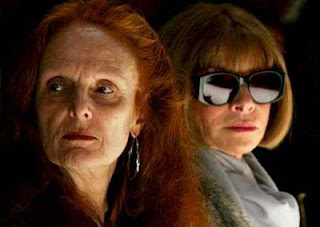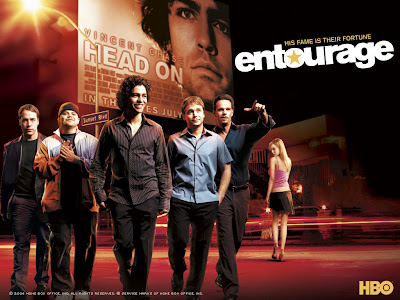 |
| Kirsten Dunst in Sofia Coppola’s Marie Antoinette |
Biopic and Documentary Week: Poster Girl
 |
| Poster Girl (2010) |
Biopic and Documentary Week: Monster
 |
| Monster (2003) |
“Well, I’ve walked these streets / A virtual stage it seemed to me / Makeup on their faces / Actors took their places next to me”
-Natalie Merchant, “Carnival”
 |
| Selby (Ricci) and Wuornos (Theron) at the roller rink |
Biopic and Documentary Week: The September Issue
 |
| Grace Coddington and Anna Wintour |
Biopic and Documentary Week: Undesired
Martyna Przybysz is a Pole who resides in London, UK. She works in film production. This is her blog: http://martynaprzybysz.tumblr.com.
Biopic and Documentary Week: The Fat Body (In)Visible
Jessica, on Fat Acceptance: Fat acceptance is just the radical idea that every body is a good body and that regardless of your shape or your size that you deserve just as much respect as the next person.
Keena, on Fat Acceptance: Fat acceptance is just accepting your body where it is at. Whether you’re bigger or you’re smaller. Just accepting what it is, your arms, your double chin, your thighs, and just not worrying about how other people may view you.
Click here to read the full piece and to watch The Fat Body (In)Visible.
Biopic and Documentary Week: What’s Love Got To Do With It?
.jpg) |
| Angela Bassett as Tina Turner in What’s Love Got To Do With It? |
 |
| Ike (Fishburne) and Tina (Bassett) |
 |
| Bassett and Fishburne |
Bitch Flicks’ Weekly Picks
Amber‘s Picks:
How Twitter Reflects the Themes of Our Society from The Nerdy Feminist
The Future of Feminism series from Fourth Wave
Vogue Italia’s “Haute Mess”: Racist, Ignorant, or Brilliant? from Racialicious
Spotlight: Anna and Modern-Day Slavery from Her Film
Sympathy for the Devil: On HBO’s Game Change, and Hating Ladies for the Right Reasons from Tiger Beatdown
Capitol Control: The Irony of The Hunger Games Movie Mania from Bitch
Stephanie‘s Picks:
“BYT @ SXSW Movies: Wonder Women“ by Jeff Spross for Brightest Young Things
“Tavi Gevinson on Creativity, Taste, and the Word ‘Girly'” from Huffington Post
“Hungering for a Female Hero: Hunger Games May Break New Ground” by Tom Long for Detroit News
“The Bitch List: Does Your Screenplay Have What It Takes?”
“On Feminism: Romantic Femininity” by Hila Shachar for Le Projet D’amour
Megan‘s Picks:
It’s Women’s History Month! Celebrate by Seeing The Hunger Games and Vote with Your Dollars This Weekend via I Will Not Diet
Will the Box Office Change the Gender Balance in Film? via Feminema
Mad Men: Set Me Free – a musical mash-up with the series’ female characters via Pop Culture Pirate
Steel Magnolias Remake Cast Announced: Queen Latifah, Phylicia Rashad to Star via Clutch Magazine
The Feminist Harry Potter Tumblr You’ve Been Waiting For via Bust Magazine
Leave your links in the comments!
Guest Writer Wednesday: You Know What I Was Just Thinking?
 |
| HBO’s Entourage |
That if President Obama REALLY wants to convince me that he’s totally an ally to ladies, he would definitely agree to a cameo in Entourage: The Movie.
SO THIS IS VERY GOOD NEWS FOR ME!
Adrian Grenier, star of the hit series “Entourage,” says he’s made a deal with President Obama.
“I promised to make the ‘Entourage’ movie if he would do a cameo. He agreed. Seriously,” Grenier wrote on Facebook on Friday.
Obama was a big fan of the HBO show.
For the record, yes, I realize that this is just some shit that some douche who starred in a horrible show about horrible people based on Mark Wahlberg’s real horrible life wrote on his Facebook page, but it has been three days and no horrified press release has been issued saying that the President categorically is not interested in appearing in the horrible movie spin-off of this horrible show, because no doy it’s fun to just let the cool bros think the prez is totes gonna do it and WHO ARE YOU GOING TO VOTE FOR, WOMEN WITH SELF-RESPECT, IF NOT FOR THE PRESIDENT WHO LOVES ENTOURAGE EVEN MORE THAN ROE V WADE?! Answer me that!
———-
Guest Writer Wednesday: Bee Movie

TEDx Women: Rachel Simmons
I’m convinced a psychological glass ceiling exists as well. And it begins as a product of a culture that is telling girls “Yes, but.” Yes, you can be powerful, but you still be nice while you do it. Yes, you be smart, but make sure you don’t make anyone uncomfortable with your intelligence. Yes, you can be active, but you be sexy and skinny while you do it.
Bitch Flicks’ Weekly Picks
Amber‘s Picks:
Southern Poverty Law Center Notes Misogynistic Sites from Fannie’s Room
The Future of Feminism: Rachel Maddow and Melissa Harris-Perry from Ms. Magazine Blog
Hot damn! Viola Davis to star in Barbara Jordan biopic from Feminéma
Dr. Who thing of the day: the feminist approach of Dr. Her from Flick Filosopher
Newspapers censor “Doonesbury” strips about abortion news from Feministing
Megan‘s Picks:
Women’s Film Festival 2012: Women Take the Reel via MIT
Geena Davis in Seattle, Calls for the ‘Next Women’s Movement’ via Humanosphere
Mad Men Remix: Don Loves Roger via Pop Culture Pirate
Bitter Irony: Most Women Genie Nominees Get Shafted on International Women’s Day via Her Film
Scarlett Johansson Desexualized in New Avengers Poster via FemPop
Sonja Sohn: Changing Baltimore Long After ‘The Wire’ via NPR
“Feminazi”: The History of Limbaugh’s Trademark Slur Against Women via MediaMatters
Stephanie’s Picks:
Women and Girls Lead Online Film Festival from ITVS
“Political Fictions: Power Corrupts Women Like Whoa” by Everett Maroon for Bitch Media
“Sexism? In my Superhero Movies? It’s More Likely Than You Think” by Claire Teasdale for Her Campus (at Emerson)
“Are Things Turning Around for Women Filmmakers?” by Rachel Fox for The Snipes
“How Lifetime Movies Helped Form My Feminism” by Elfity for Persephone Magazine
Leave your links in the comments!







